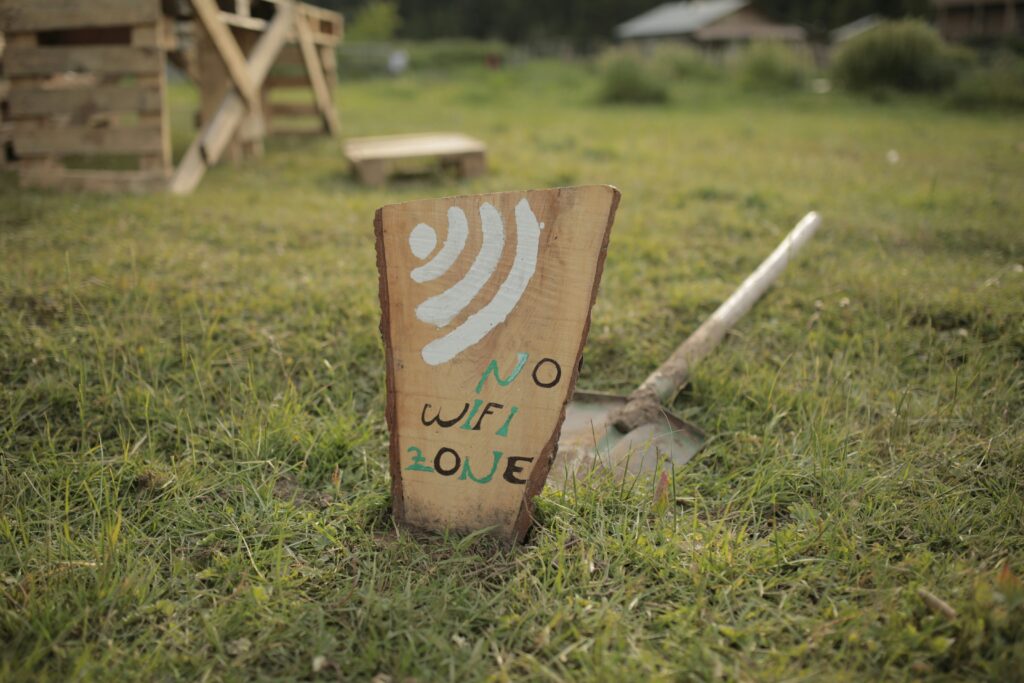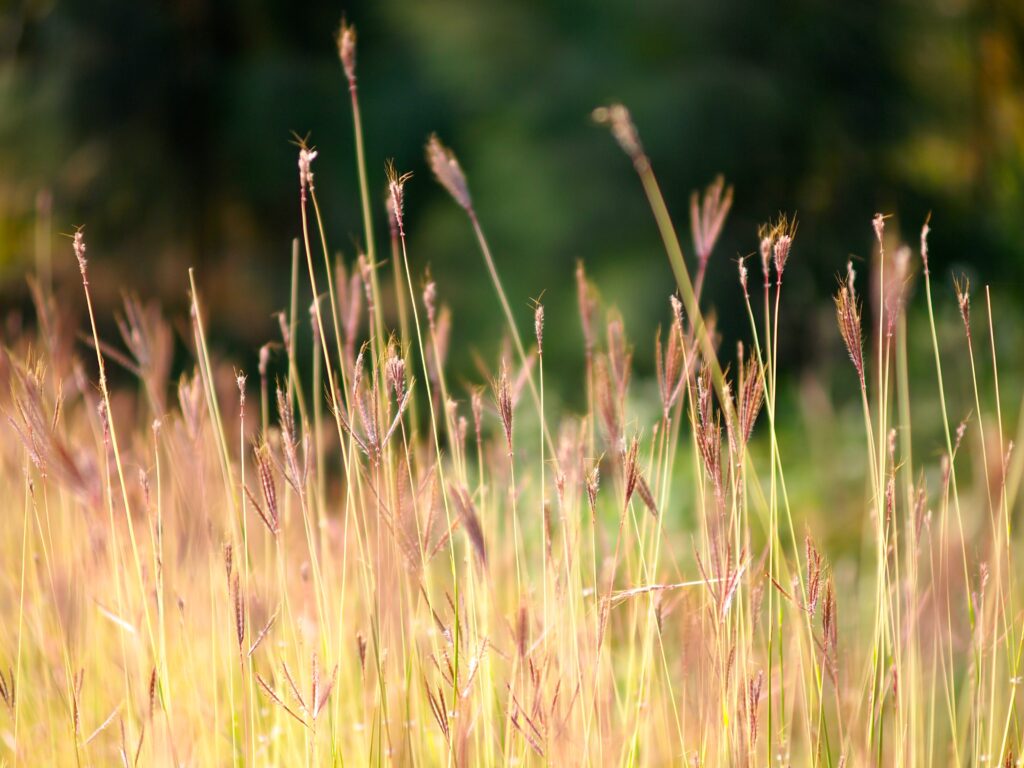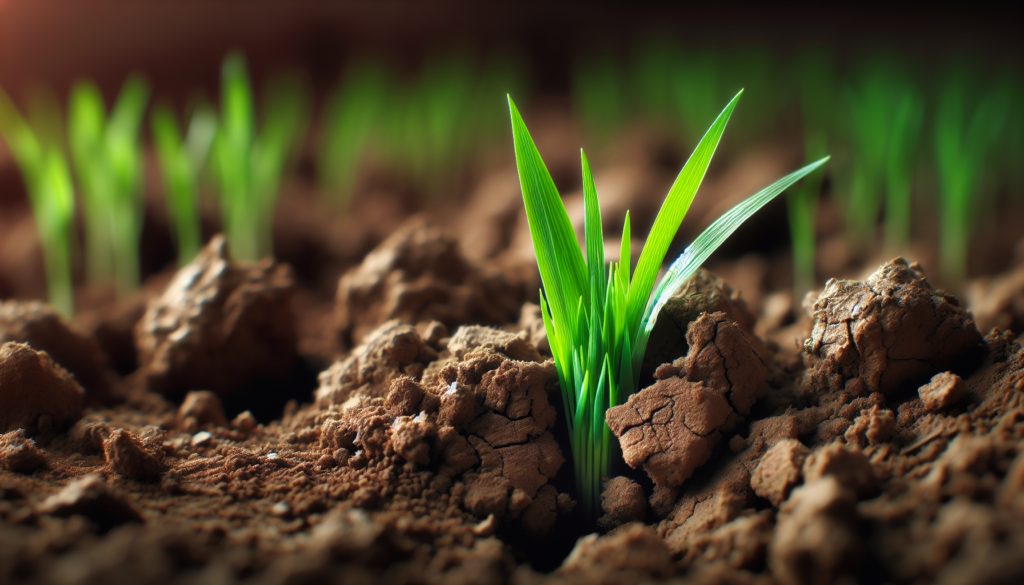Are you struggling to find the best grass seed for clay soil? Look no further! This article will provide you with all the information you need to choose the perfect grass seed that will thrive in clay soil conditions. Clay soil can present challenges for growing grass, but with the right seed selection, you can achieve a lush and healthy lawn. So, whether you’re a seasoned gardener or a first-time homeowner, read on to discover the best options for transforming your clay soil into a beautiful green landscape.
Understanding Clay Soil
Clay soil can present some unique challenges when it comes to growing grass. Its heavy, compacted nature can lead to poor drainage, making it difficult for grass roots to access water and nutrients. Additionally, clay soil tends to become easily compacted, which can limit root growth and restrict the movement of air and water through the soil. However, with the right knowledge and preparation, it is still possible to achieve a lush, healthy lawn on clay soil.
Why Clay Soil is Challenging for Growing Grass
The dense texture of clay soil poses several challenges for grass growth. One of the main issues is poor drainage. The compacted particles in clay soil do not allow water to penetrate easily, leading to waterlogging and potential root rot. This can cause grass to become waterlogged, suffocating the roots and hindering their ability to uptake necessary nutrients.
Furthermore, because clay soil easily becomes compacted, grass roots may struggle to penetrate and establish themselves. Compacted soil limits both air circulation and the movement of water, making it difficult for roots to access oxygen and nutrients. Consequently, grass on clay soil may struggle to grow deep and sturdy root systems, leaving it vulnerable to drought and other environmental stresses.

This image is property of images.unsplash.com.
What Makes Clay Soil Different
Clay soil differs from other soil types primarily due to its particle size. Clay particles are smaller than those found in sandy or loamy soils, which gives clay soil its dense, heavy nature. These tiny particles can pack tightly together, creating a compacted soil structure that restricts root growth and water movement.
In addition to its particle size, clay soil also has a high water-holding capacity. While this may seem beneficial, it can easily lead to overwatering and waterlogged conditions for grass. Furthermore, clay soil tends to retain water for longer periods, which can be detrimental during rainy seasons or excessive watering.
The Importance of Choosing the Right Grass Seed for Clay Soil
When it comes to growing grass on clay soil, selecting the right grass seed is crucial. Certain grass species and varieties are better suited for the challenges that clay soil presents. By choosing grass seed that is specifically designed to thrive in clay soil conditions, you can ensure the best chance of success for your lawn.

This image is property of images.unsplash.com.
Factors to Consider when Choosing Grass Seed for Clay Soil
Several factors should be considered when choosing grass seed for clay soil to ensure optimal growth and performance. These factors include climate and weather conditions, soil drainage, sunlight exposure, traffic and use, as well as disease and pest resistance.
Climate and Weather
Different grass species thrive under different climate conditions. Consider the temperature ranges, rainfall patterns, and overall climate characteristics of your region when selecting grass seed. Some grasses are better adapted to cool-season climates, while others are more suitable for warm-season regions.
Soil Drainage
Since clay soil tends to hold water for longer periods, it is essential to choose grass seed that can tolerate or even thrive in moist conditions. Opt for grass varieties that have good drainage tolerance to prevent waterlogging and potential damage to the grass.
Sunlight Exposure
Grass species have varying requirements for sunlight exposure. Some grasses require full sun, while others can tolerate partial shade. Assess the amount of sunlight your lawn receives throughout the day and choose grass seed that matches the light conditions.
Traffic and Use
Consider the level of traffic and use your lawn will experience. If you have children, pets, or plan to entertain frequently, choose grass seed that is durable and can withstand heavy foot traffic without extensive damage or thinning.
Disease and Pest Resistance
Certain grass species and varieties exhibit better resistance to common lawn diseases and pests. Be aware of the prevalent diseases and pests in your area and select grass seed that is known for its resistance to those specific issues. This can help prevent extensive damage and reduce the need for chemical interventions.
Types of Grass Seed Suitable for Clay Soil
Several grass species and varieties have proven to be well-suited for growing in clay soil conditions. Consider the following grass types when choosing the best grass seed for your clay soil lawn:
Cool-Season Grasses
Cool-season grasses, such as tall fescue, Kentucky bluegrass, and perennial ryegrass, thrive in regions with cooler temperatures and higher moisture levels. These grasses are known for their ability to germinate and establish quickly, making them an excellent choice for reseeding or establishing a new lawn on clay soil.
Warm-Season Grasses
Warm-season grasses, including Bermuda grass, Buffalo grass, and Zoysia grass, are better adapted to regions with hot summers and milder winters. These grasses are known for their ability to tolerate drought and heat conditions, making them suitable for clay soil with limited water access.
Drought-Tolerant Grasses
If you live in an area prone to drought conditions, consider selecting grass seed that is specifically marketed as drought-tolerant. These grasses have been bred to withstand extended periods of limited water availability and can help maintain a green and healthy lawn even during dry spells.
Tall Fescue
Tall fescue is a popular cool-season grass that is known for its adaptability to various soil types, including clay soil. Its deep-rooting ability helps it withstand challenging soil conditions and periods of drought. Tall fescue is also highly traffic-tolerant and can recover well from heavy use.
Buffalo Grass
Buffalo grass is a warm-season grass that has excellent heat and drought tolerance. It forms a dense, low-maintenance turf that can thrive in clay soil with minimal inputs. Buffalo grass is known for its ability to go dormant during dry spells and quickly recover when water becomes available, making it ideal for water-conservative regions.
Zoysia Grass
Zoysia grass is another warm-season grass that performs well in clay soil. With its dense and lush growth habit, Zoysia grass can crowd out weeds and tolerate heavy use. It has good heat and drought tolerance, making it suitable for clay soil that may experience periods of water stress.
Bermuda Grass
Bermuda grass is a warm-season grass with excellent heat tolerance and strong recuperative properties. It establishes quickly and forms a dense turf that can withstand heavy foot traffic. Bermuda grass performs best in areas with full sun exposure and has good drought tolerance.
Kentucky Bluegrass
Kentucky bluegrass is a cool-season grass known for its tolerance to clay soil conditions. It thrives in areas with cool summers and can withstand heavy use. Kentucky bluegrass has good drought tolerance and can recover quickly from damage.
Ryegrass
Ryegrass, both annual and perennial varieties, are cool-season grasses that can be used as temporary covers or overseeding options for clay soil lawns. They establish quickly and germinate rapidly, providing coverage while other grass varieties establish. Ryegrass prefers moist, well-drained soil conditions.
Perennial Ryegrass
Perennial ryegrass is a cool-season grass that can be used as part of a mixture for clay soil lawns. It establishes quickly, fills in bare spots, and provides a lovely, dark green appearance. Perennial ryegrass has good drought tolerance and can thrive in heavy soils with proper soil preparation.

This image is property of images.unsplash.com.
Best Grass Seed Varieties for Clay Soil
When selecting grass seed for clay soil, it is important to choose the specific variety that is most suited to your needs and local climate conditions. Consider these best grass seed varieties for clay soil:
1. Tall Fescue Varieties
- Kentucky 31 Tall Fescue
- Rebel Tall Fescue
2. Buffalo Grass Varieties
- UC Verde Buffalograss
- Legacy Buffalo Grass
3. Zoysia Grass Varieties
- Meyer Zoysia
- Palisades Zoysia
4. Bermuda Grass Varieties
- Princess 77 Bermuda Grass
- Tifway 419 Bermuda Grass
5. Kentucky Bluegrass Varieties
- Midnight Kentucky Bluegrass
- Blue Velvet Kentucky Bluegrass
6. Ryegrass Varieties
- Annual Ryegrass
- Perennial Ryegrass
7. Perennial Ryegrass Varieties
- Mazama Perennial Ryegrass
- Defiance XRE Perennial Ryegrass
8. Mixtures of Compatible Grass Seeds
- Clay Soil Mixtures
- Shade-Tolerant Mixtures
9. Localized Recommendations for Clay Soil
Consult with local experts, such as university extension services or local nurseries, to get recommendations on specific grass seed varieties that are known to perform well in clay soil conditions in your area.
10. Certified Seed vs. Non-Certified Seed
Choosing certified grass seed offers the advantage of quality control and assurance that the seed will perform as advertised. Certified seed has undergone testing to ensure it meets specific quality standards. While non-certified seed may be less expensive, it may not provide the same level of quality and performance.
How to Prepare Clay Soil for Planting Grass Seed
Properly preparing the clay soil before planting grass seed is crucial for establishing a healthy lawn. Follow these steps to prepare your clay soil for successful grass growth:
Soil Testing
Before planting grass seed, conduct a soil test to determine the pH level and nutrient content of your clay soil. Soil testing will help you understand any deficiencies or imbalances and allow you to make informed decisions when amending the soil.
Loosening Clay Soil
Clay soil tends to become compacted over time, limiting root growth and restricting water movement. Loosening the soil before planting grass seed can help improve its structure and promote better drainage. Use a garden fork or a mechanical aerator to break up compacted soil layers.
Improving Soil Drainage
To improve drainage in clay soil, consider adding organic matter such as compost, peat moss, or aged manure. These amendments help to break up clay particles, allowing for better water movement through the soil. Incorporate the organic matter into the top several inches of soil.
Amending the Soil
Based on your soil test results, you may need to amend your clay soil with additional nutrients or pH-adjusting materials. Follow the recommendations provided by your soil test, and incorporate the necessary amendments into the soil to ensure a nutrient-rich and balanced growing environment for your grass seed.
Using Organic Matter
Organic matter can greatly benefit clay soil by improving its structure, water-holding capacity, and nutrient content. Incorporating compost or well-rotted organic matter into the soil can help retain moisture, reduce compaction, and provide essential nutrients for the grass.
Leveling the Surface
Before seeding, make sure to level the surface of your clay soil to create an even planting bed. Use a rake or a leveling tool to smooth out any uneven areas and remove large debris. This will ensure consistent seed coverage and even germination.
Seeding Techniques for Clay Soil
When seeding grass on clay soil, it is important to use the correct seeding technique to maximize success. Consider using a lawn spreader to distribute the seed evenly. For smaller areas, hand broadcasting can also be used. Once the seed has been applied, lightly rake it into the soil to ensure good seed-to-soil contact.

Caring for Grass Seed on Clay Soil
After planting your grass seed on clay soil, proper care and maintenance are essential for successful establishment and growth. Here are some key aspects to consider:
Watering Requirements
Proper watering is crucial for the germination and establishment of the grass seed. Keep the soil consistently moist during the initial germination period, typically 2-3 weeks. Water deeply but infrequently to encourage deep root development once the grass becomes established.
Mowing and Maintenance
Once the grass seed has germinated and the turf has reached a height of approximately 3 inches, mow the grass using a sharp blade. Set the mower to a height of 2-3 inches to maintain a healthy and vigorous lawn. Regular mowing keeps the grass at an optimal height, promotes denser growth, and helps prevent weed competition.
Fertilization
Fertilizing your lawn with appropriate nutrients is crucial for healthy growth. Consider using a slow-release fertilizer designed for clay soil, as these formulations can release nutrients gradually over time. Follow the recommended application rates and timing for your specific grass species to provide the necessary nutrients for optimal growth.
Weed Control
Weeds can be particularly problematic in clay soil, as they can thrive under the same conditions that grass finds challenging. Apply appropriate pre-emergent herbicides to prevent weed seeds from germinating, and use selective post-emergent herbicides to target and control existing weeds without harming the grass.
Disease Prevention
Monitor your lawn for any signs of disease and take preventative measures to minimize their impact. Fungicides specifically formulated for grass diseases can be applied as a preventative measure or at the first sign of disease development. Ensure proper air circulation by avoiding overwatering and mowing at the correct height to reduce disease susceptibility.
Pest Management
Various pests, such as grubs, insects, and rodents, can damage grass on clay soil. Employ integrated pest management strategies to monitor and control pests effectively. This can include using natural predators, implementing cultural practices, and applying appropriate insecticides or rodenticides as a last resort.
Common Mistakes to Avoid when Planting Grass Seed on Clay Soil
While taking the necessary steps for successful grass growth on clay soil, it is important to avoid these common mistakes:
Overwatering
Although clay soil tends to hold water, it is crucial not to overwater. Excessive irrigation can lead to waterlogged conditions, suffocating the grass roots and promoting disease development.
Underwatering
On the other hand, underwatering can also cause stress to the grass and hinder its growth. Make sure to provide adequate water to promote healthy establishment and growth.
Inadequate Soil Preparation
Proper soil preparation is key for nurturing healthy grass growth. Neglecting to address soil compaction or skipping soil amendments can lead to subpar results.
Not Following Seeding Instructions
Each grass variety has specific requirements for seeding rates, depth, and other considerations. Neglecting to follow these instructions can result in patchy growth and poor establishment.
Improper Mowing Techniques
Mowing grass too low or infrequently can stress the grass and weaken its overall health. Make sure to mow at the proper height for your grass species and maintain regular mowing schedules to promote denser growth.
Neglecting Pest and Disease Control
Pests and diseases can wreak havoc on grass, especially in challenging clay soil conditions. By neglecting pest and disease control, you risk significant damage to your lawn and decreased overall health.
Planting Unsuitable Grass Varieties
Choosing grass varieties that are not well-suited for clay soil conditions can result in poor growth, increased disease susceptibility, and potential failure. Make sure to select grass seed varieties that are specifically adapted to the challenges of clay soil.

Conclusion
Growing grass on clay soil may present some challenges, but with proper understanding, preparation, and care, a healthy and beautiful lawn is achievable. By choosing grass seed varieties that are well-suited for clay soil, addressing soil compaction and drainage issues, and following proper maintenance practices, you can create a thriving lawn that enhances the beauty and enjoyment of your outdoor space. Remember to consult with local experts for specific recommendations based on your region’s climate and soil conditions. Happy growing!
